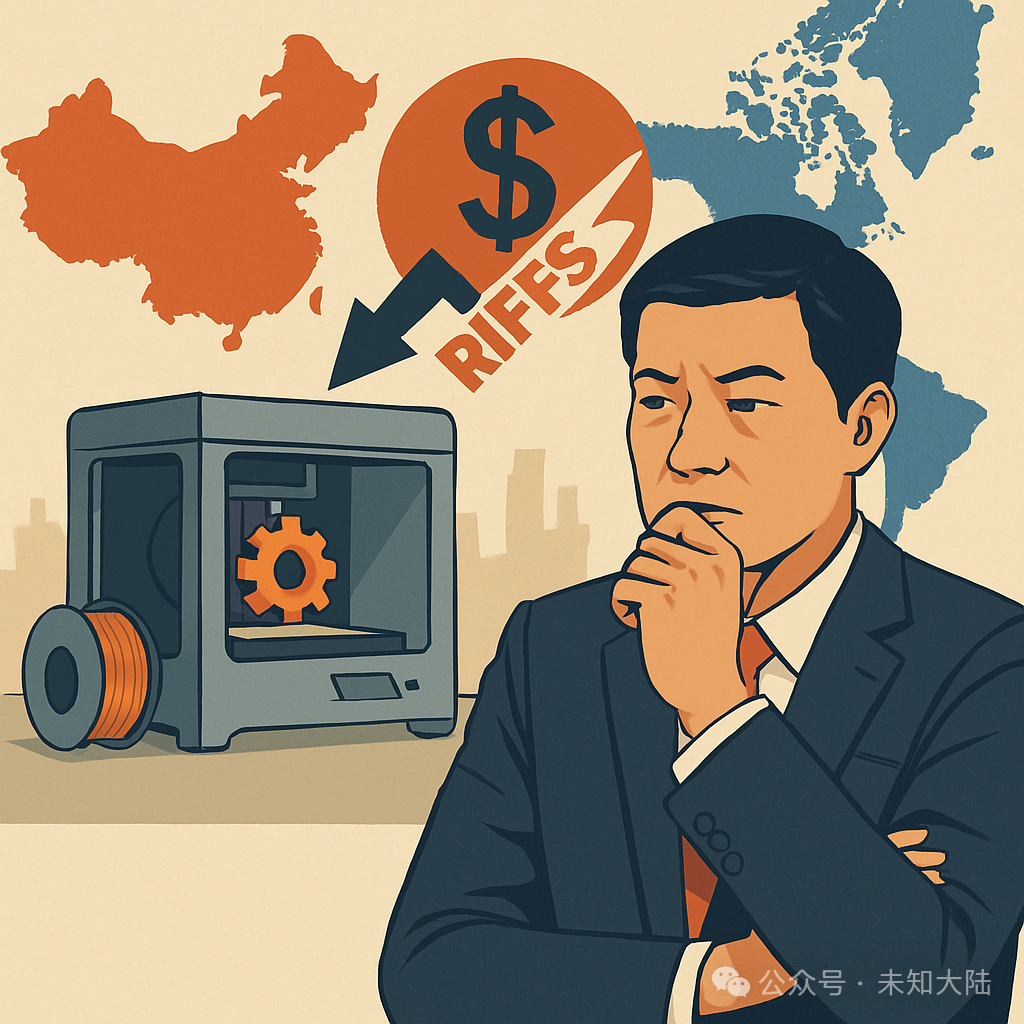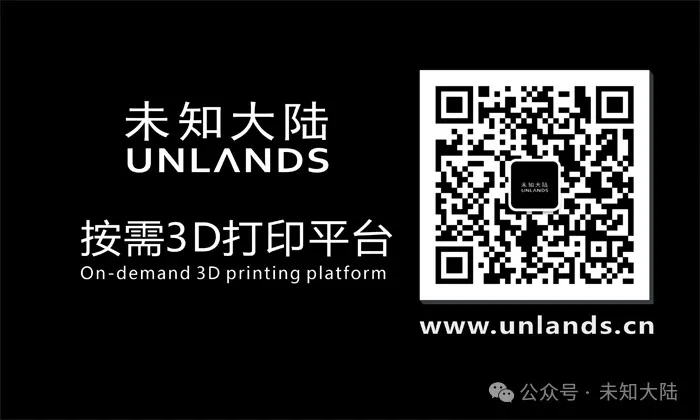On the evening of April 9, 2025, U.S. President Donald Trump announced a 125% tariff on all goods from China, a decision that undoubtedly pushed the global trade landscape into a new crisis. For Chinese 3D printing manufacturers, this is not only a sudden crisis but also an opportunity to reassess their globalization strategies and accelerate transformation and upgrading. Under the shadow of the 125% tariff, the overseas strategies of Chinese 3D printing manufacturers will face unprecedented challenges, while also nurturing the possibility of breakthroughs. This article will deeply analyze the impact of this policy on the Chinese 3D printing industry and explore the potential response strategies that manufacturers may adopt.

1. The Impact of the 125% Tariff: The Dilemma of Chinese 3D Printing Manufacturers
The magnitude of the 125% tariff imposed by Trump exceeds any previous expectations from prior trade wars. For the export-dependent 3D printing industry, this means skyrocketing costs, shrinking markets, and immense pressure on supply chains. The specific impacts can be elaborated from the following aspects:
Soaring Export Costs and Loss of Price Competitiveness
Chinese 3D printing manufacturers are known for their cost-effectiveness, especially in the consumer-grade 3D printer market, with brands like Creality, Anycubic, and Elegoo capturing significant global market shares due to low costs and high performance. However, the 125% tariff will directly cause product prices to double or even higher. For example, a printer originally priced at $500 may cost American consumers over $1,100 after the tariff, significantly weakening the price advantage of Chinese manufacturers in the U.S. market and forcing consumers to turn to local or alternative products from other countries.
Contraction of the U.S. Market and Obstacles to Global Expansion
The U.S., as one of the largest consumer markets for 3D printing globally, is crucial for Chinese manufacturers. The increase in tariff barriers may lead to a sharp decline in order volumes, especially for small and medium-sized enterprises reliant on the U.S. market, which may face survival crises in the short term. More importantly, the contraction of the U.S. market may trigger a chain reaction, affecting the brand image and sales networks of Chinese manufacturers in other global markets.
Supply Chain Pressures and Risks of Retaliatory Tariffs
Chinese 3D printing manufacturers rely on global supply chains for production, with some key components (such as electronic components and optical devices) possibly imported from the U.S. or other countries. If the Chinese government takes reciprocal measures, the import costs of U.S. components will also rise, further squeezing profit margins. Additionally, the complexity of the supply chain makes it difficult for manufacturers to quickly adjust production layouts, potentially leaving them in a passive position in the short term.
2. Adjusting Overseas Strategies: Turning Crisis into Opportunity
Faced with the extreme pressure of the 125% tariff, Chinese 3D printing manufacturers must quickly adjust their overseas strategies to mitigate risks and seek new growth points. Here are several possible response paths:
Accelerating Localization of Production to Bypass Tariff Barriers
Establishing production bases in target markets is the most direct means to avoid tariffs. For instance, setting up assembly plants in the U.S. or collaborating with local companies for production can not only exempt high tariffs but also align closely with market demands and shorten delivery cycles. For example, Prusa Research, a Czech company, successfully reduced the impact of trade barriers by establishing assembly lines in the U.S. If Chinese manufacturers like Bambu Lab or Creality can establish similar facilities in the U.S., they can not only maintain market share but also potentially gain a brand premium for “local manufacturing.”
However, local production is not easy. Manufacturers need to invest heavily in building factories, training employees, and dealing with the challenges of high local labor costs. Nevertheless, considering the long-term nature of the 125% tariff, this strategy may be a necessary step.
Diversifying Market Development to Reduce Dependence on the U.S.
With restrictions in the U.S. market, Chinese manufacturers should accelerate the exploration of other potential markets, such as Europe, Southeast Asia, Latin America, and Africa. The demand for 3D printing in these regions is rapidly growing, and tariff barriers are relatively low. For example, Southeast Asian countries have a strong demand for manufacturing upgrades, while the European market has a continuous demand for high-precision, professional-grade 3D printing equipment. By adjusting product positioning and marketing strategies, Chinese manufacturers can reallocate resources and disperse risks from a single market.
Additionally, cooperation with countries along the “Belt and Road” initiative also offers new opportunities. The infrastructure construction and industrialization processes in these regions provide broad application scenarios for 3D printing technology, allowing manufacturers to open markets through technology exports and local collaborations.
Technological Upgrades and Brand Transformation to Enhance Value-Added
The impact of tariffs has exposed the shortcomings of Chinese 3D printing manufacturers in overly competitive low-end markets. The 125% tariff makes price wars unsustainable, and manufacturers must enhance product value through technological innovation. For example, developing 3D printers that support multi-material, high-precision, or industrial-grade applications, or seeking breakthroughs in software ecosystems and smart manufacturing, can help transition from low-cost suppliers to technology-driven enterprises.
Brand building is also crucial. Manufacturers that previously relied on OEM or low-price strategies should increase investment in their own brands, gaining market trust through quality after-sales service and user experience. Bambu Lab has recently gained prominence overseas due to its innovative design and high performance, a model worth emulating.
Supply Chain Restructuring and Optimization of Overseas Warehouses
To cope with tariffs and potential retaliatory measures, manufacturers need to reassess their supply chain layouts. For example, shifting some production processes to countries with lower tariffs, such as Vietnam, Thailand, or Mexico, can allow entry into the U.S. market through a “curved rescue” approach. At the same time, expanding the scale and coverage of overseas warehouses, and pre-shipping products to target markets, can not only reduce the impact of tariffs but also enhance logistics efficiency to meet immediate demands.
Exploring Digital and Distributed Manufacturing Models
The unique advantage of 3D printing technology lies in its flexibility and potential for distributed production. Manufacturers can reduce physical exports by providing digital design files and remote printing services, directly licensing technology to overseas partners or users. This model not only circumvents tariffs but also promotes the realization of the “micro-factory” concept, adapting to the trend of localized production.
3. Long-Term Perspective: New Opportunities Emerging from Crisis
While the 125% tariff poses significant short-term pressure on Chinese 3D printing manufacturers, in the long run, it may also serve as a catalyst for industry transformation and upgrading. In the past, manufacturers rapidly expanded by relying on cost advantages, but this model is difficult to sustain in a high-tariff environment. This crisis compels companies to accelerate technological research and development, optimize global layouts, and transition from mere hardware suppliers to comprehensive solution providers.
Moreover, the tariff war may prompt the Chinese government to introduce more supportive policies, such as subsidies for localized production and encouragement of technological innovation, injecting new development momentum into the industry. At the same time, as global manufacturing transitions to digitalization and intelligence, the prospects for 3D printing as a key technology remain broad. If Chinese manufacturers can seize this window of opportunity, they can not only weather the storm but also potentially gain a leading position in the next round of competition.
4. Conclusion
Under the shadow of the 125% tariff, the overseas journey of Chinese 3D printing manufacturers is bound to be filled with challenges, but it is not a dead end. Through strategies such as localized production, market diversification, technological upgrades, supply chain optimization, and distributed manufacturing, manufacturers can seek opportunities in crisis. The key lies in swift action, precise positioning, and achieving a leap from “Made in China” to “Intelligent Manufacturing in China” in global competition. This tariff war may be a painful process, but for prepared companies, it is also an opportunity to reshape the industry landscape. Whether Chinese 3D printing manufacturers can continue to write brilliance on the global stage depends on today’s choices and execution.
